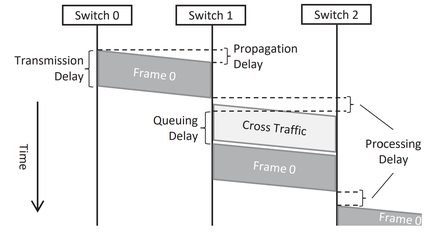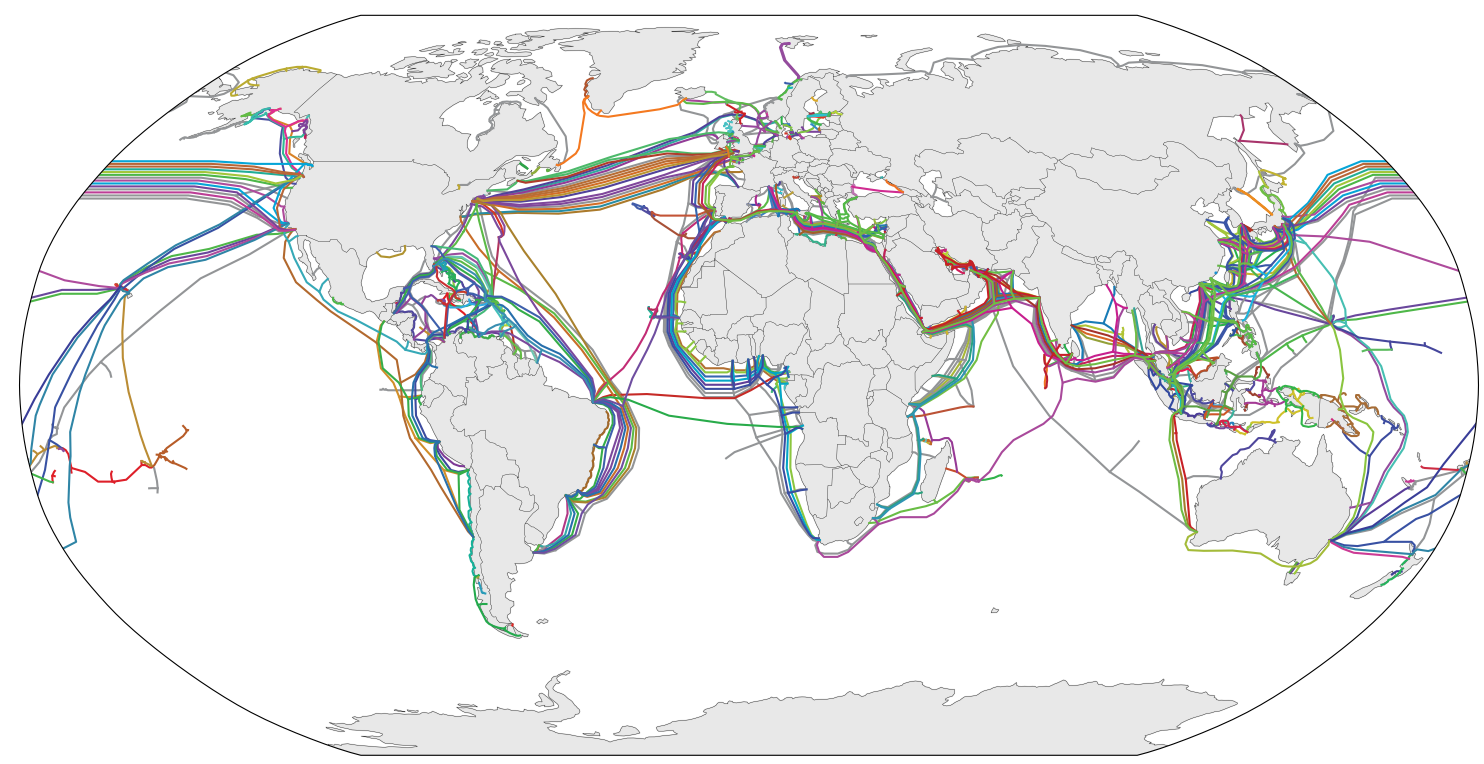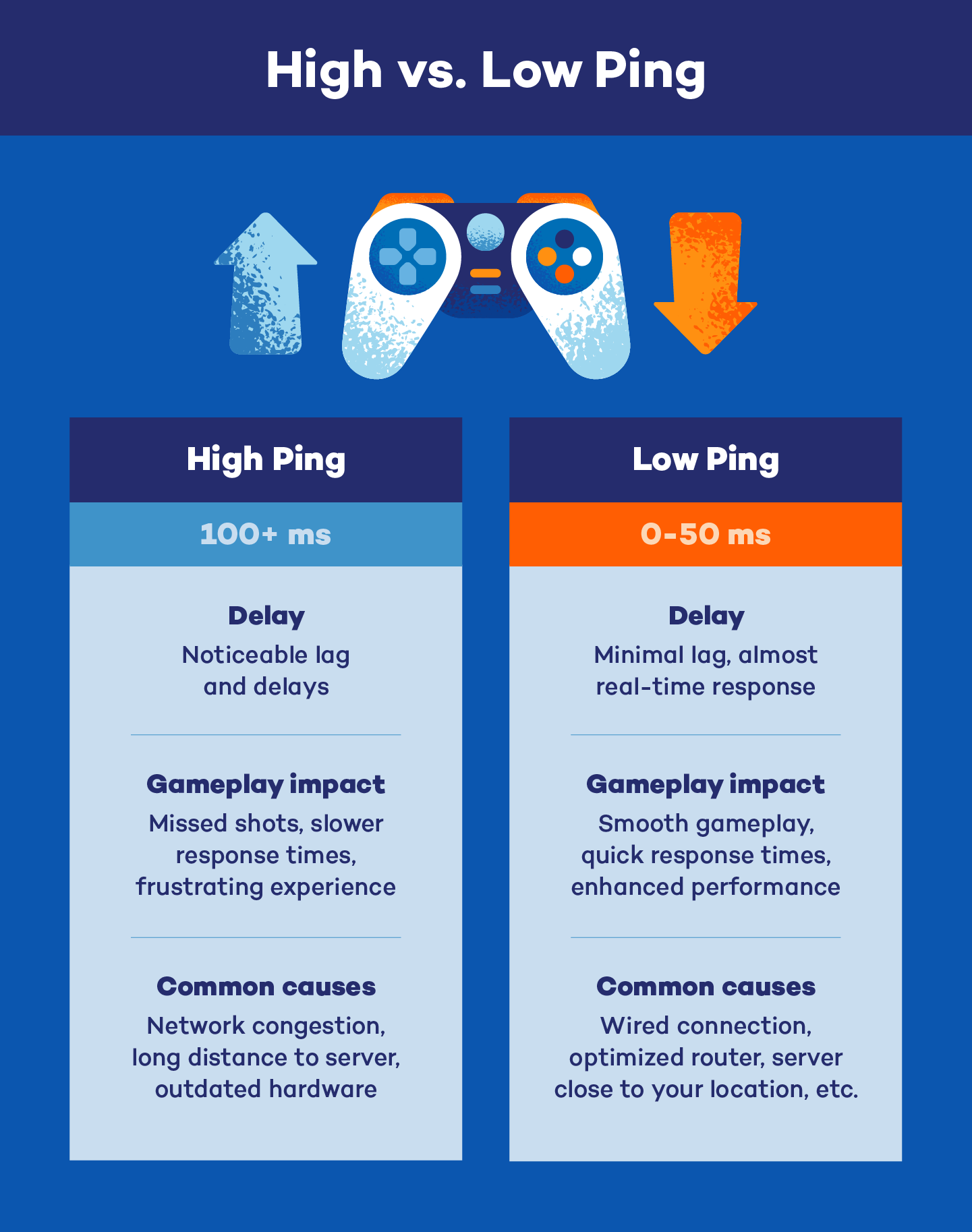TL;DR Latency and ping measure how quickly your internet responds, impacting everything from gaming to streaming. Discover how LunaFibre delivers star-level speeds across South Africa with low latency, why this matters especially for gamers, and how fibre networks like Openserve improve your connection. Explore fun space-themed metaphors to understand data travel and get practical tips to cut latency for a smoother online experience, all explained with LunaFibre’s playful, easy-to-grasp style tailored for South African users.
Latency and ping might sound technical, but they’re actually pretty easy to get once you break them down. Think of latency as the delay or lag in time it takes for data to travel from your device to a server and back, while ping measures this delay in milliseconds.
For LunaFibre’s users, understanding these terms is essential because low latency means smoother streaming or gaming experiences without annoying pauses. Imagine watching your favourite football match online with no buffering – that’s great latency at work! So, next time you notice a slow connection, remember it could be due to higher latency or ping causing that frustrating wait.
Table of Contents
- What Is Latency and How Does It Affect Your Connection?
- Ping Explained: The Speed Test of Your Internet
- How LunaFibre Brings Star-Level Speeds to South Africa
- Why Low Latency Matters for Gamers and Streamers
- The Science Behind Ping Times in Cape Town and Johannesburg
- Space-Themed Fun: Think of Your Data as Astronauts Travelling Through Space
- How Fibre Networks Like Openserve Impact Your Ping and Latency
- Everyday Examples of Latency in South African Lifestyles
- Tips to Reduce Latency and Get a Smoother Online Experience
- Why LunaFibre’s Playful Brand Makes Internet Talk Easy and Fun
- Frequently Asked Questions
11.1. What exactly is latency and how does it affect my internet experience?
11.2. How is ping related to latency, and why do gamers care so much about it?
11.3. Can network hardware and connection type influence latency and ping times?
11.4. Why does latency sometimes cause shaky video calls or lag during streaming?
11.5. Is there a way to test my latency and ping to improve my online performance?
What Is Latency and How Does It Affect Your Connection?

Credits: en.wikipedia.org
Latency is the time it takes for data to travel from your device to a server and back, measured in milliseconds (ms). It’s how fast data gets from you to a server and back. When latency is high you’ll notice frustrating delays like slow page loading or lag during online gaming.
Several factors influence latency, including the physical distance between you and the server, the quality of network equipment and how busy the network is at any given time. Unlike bandwidth which is how much data can be transferred at once, latency is about the speed of each interaction. For example even with a fast internet package high latency can make video calls choppy or gaming unresponsive. Wireless connections usually have higher latency than wired fibre as data has to jump through the air and often more devices. In South Africa the state of local internet infrastructure plays a big role in typical latency levels. Lower latency means smoother real-time experiences whether you’re gaming, streaming live content or chatting on a video call.
Ping Explained: The Speed Test of Your Internet
Ping is a simple yet powerful test that measures latency by sending a small data packet from your device to a server and timing how long it takes to get a reply. Think of it as a quick handshake between your device and the internet service you want to reach.
The result is shown in milliseconds, where a lower number means a faster and smoother connection. For example if you ping a local server in Cape Town or Johannesburg your response time will usually be quicker than pinging a server overseas as the data has less distance to travel. This is why ping tests are especially useful in South Africa where checking local servers gives an accurate picture of your internet speed. High ping can cause frustrating delays in online gaming or annoying buffering when streaming videos so understanding your ping helps you diagnose if slow internet is due to distance, network routes or connection type. Fibre connections usually have lower ping than DSL or ADSL as they handle data more efficiently. Many online speed tests bundle ping with download and upload speeds to give you the full story on your network performance. By checking your ping regularly you can keep an eye on your connection’s health and spot any issues before they become major headaches.
| Ping Result (ms) | Connection Quality | Typical Experience | Common Cause |
|---|---|---|---|
| 0-30 | Excellent | Smooth gaming, instant loads | Local fibre connection |
| 31-60 | Good | Minor delays, generally pleasant | Standard broadband or nearby server |
| 61-100 | Fair | Noticeable lag in games, buffering in streams | Distant servers or congested network |
| 101-200 | Poor | Frequent lag, buffering, frustrating experience | Wireless or DSL connections |
| 200+ | Very Poor | Severe lag, almost unusable for real-time apps | International servers or heavy congestion |
How LunaFibre Brings Star-Level Speeds to South Africa

Credits: researchictafrica.net
LunaFibre is changing the internet landscape in South Africa by harnessing the power of modern fibre optic technology. Unlike traditional copper cables, fibre optics transmit data as pulses of light which reduces delays and increases speed. Whether you’re gaming online or streaming your favourite shows in Cape Town or Johannesburg, you get impressively low latency and no lag. LunaFibre’s network isn’t just fast; it’s local, so they’re investing in infrastructure to reduce ping times in key urban areas. Their local servers mean data doesn’t have to travel far, so you get responses quickly and your connection feels instant. Plus, fibre networks are less prone to weather or interference than wireless connections, so you get a more consistent experience. With symmetrical speeds, upload and download rates are the same, so video calls, file sharing and multi-device usage won’t slow down your connection. Thanks to LunaFibre’s robust network backbone and commitment to fibre technology, South Africans get internet that’s out of this world.
Why Low Latency Matters for Gamers and Streamers

Credits: nomadinternet.com
For gamers, low latency is critical because it means actions happen instantly in fast paced games where every millisecond counts. Even a tiny delay can cause you to miss a shot or experience lag in multiplayer matches and throw off your timing and ruin the experience. Streamers rely heavily on steady low latency to keep their live video smooth and buffer free. This smooth connection allows them to interact with their audience in real time, making chats and reactions feel natural and engaging. Competitive gaming tournaments are a great example of why low latency matters: organisers often use fibre connections to ensure precise timing and fairness as many games set ping limits to keep play balanced. South African gamers especially benefit from local fibre networks, reducing lag and making gameplay more enjoyable. Beyond gaming, low latency improves video calls and online collaboration tools, so communication is clearer and without frustrating pauses. When latency spikes occur, both players and audience get frustrated as gameplay stutters or streams freeze and breaks immersion. Keeping low latency stable helps keep gaming and streaming sessions fluid, immersive and fun.
The Science Behind Ping Times in Cape Town and Johannesburg

Credits: liorsinai.github.io
Ping times are largely influenced by the physical distance between your device and the server it’s communicating with. In South Africa, Cape Town and Johannesburg have distinct network infrastructures that play a key role in this. Local fibre optic cables in both cities shorten the distance data has to travel, which helps reduce ping. These cities also host internet exchange points, allowing data to be routed more efficiently without unnecessary detours. When you connect to a server within South Africa, ping times tend to be much better because data doesn’t have to travel overseas. However, international ping is affected by submarine cables linking South Africa to the rest of the world, which introduces extra delay. As data packets journey through multiple routers and switches, each step adds a small amount of latency. Network congestion during peak hours can further increase ping times, making your connection feel sluggish. Fortunately, improvements in local fibre networks not only lower ping but also reduce jitter, resulting in more consistent and reliable response times. Cape Town and Johannesburg continue to benefit from ongoing upgrades to their fibre infrastructure, promising even faster and smoother online experiences in the near future.
Space-Themed Fun: Think of Your Data as Astronauts Travelling Through Space

Credits: discovermagazine.com
Think of your data packets as brave astronauts on a journey through a vast network of cables and servers. Each data packet stops at space stations (routers) along the way, where it might pause for a bit before moving on. Latency is the total time it takes for the data packets to travel between these space stations plus any waiting time, just like how astronauts spend time docking or refuelling. The further away your device is from the server, the longer the astronauts take to get to their destination, just like a trip to a distant planet takes longer than a nearby moon. Sometimes these astronauts encounter meteor showers, interference or damaged cables that slow them down or force them to take detours around congested or faulty routes. Fibre optic cables are the starships of this journey, using beams of light to speed data along at incredible speeds, so your astronauts move faster and smoother. Ping measures how long it takes the astronauts to complete a round trip to a planet (server) and back, so you can see how responsive your connection is. Just like astronauts need clear space highways to avoid delays, your data needs clear network paths to stay fast and reliable. Improving networks is like building faster rockets and smoother space highways, so your data astronauts can get to their destination no matter how far they have to travel.
How Fibre Networks Like Openserve Impact Your Ping and Latency
Openserve plays a big part in the internet experience in South Africa by providing a fibre network infrastructure that many ISPs can use. Its fibre cables connect to homes directly to central nodes, so data has to travel less distance and latency is reduced. Because fibre uses fast, direct routes for data transmission, ping times are very low, which is important for things like gaming or video conferencing. But the quality of network maintenance and upgrades by Openserve also affects how smooth your connection feels. When fibre infrastructure is well maintained and upgraded, your ping is steady and low. When shared fibre lines are congested during peak hours, ping can spike briefly. Openserve’s presence in major cities like Johannesburg and Cape Town reduces international ping times by providing more direct routes to global networks, so overall speed and reliability is better. Network resilience and redundancy in their system means that when faults occur, the network recovers quickly so your connection stays smooth. Partnerships with providers like LunaFibre further improve this experience by using Openserve’s infrastructure to offer competitive, high quality internet services that keep South Africans connected and online without the frustration.
Everyday Examples of Latency in South African Lifestyles

Credits: statista.com
We all experience latency in our daily lives, even if we don’t realise it. When you’re waiting for a YouTube or Netflix video to start, the delay before it plays is latency. On Zoom calls with family or colleagues, latency causes those awkward pauses where people talk over each other. Shopping online can be slow when latency is high, browsing through South African stores or international sites can be frustrating. Mobile apps that show real-time weather updates or traffic in cities like Johannesburg or Cape Town rely on low latency to provide accurate info quickly. Gamers in these cities feel the difference latency makes during fast-paced mobile games, a slow connection can mean the difference between winning and losing. Smart home devices also benefit from low latency fibre connections, responding faster when you switch on lights or adjust your thermostat. Watching live sports without annoying pauses or buffering requires steady, low latency especially when streaming local matches. Social media apps load photos and videos faster with improved latency, keeping your feed fresh and exciting. Downloading files from cloud storage feels smoother and quicker when latency is low, handy for students and professionals alike. Lastly, accessing websites hosted locally in South Africa reduces latency compared to overseas servers, so faster responses and a better online experience overall.
Tips to Reduce Latency and Get a Smoother Online Experience

Credits: pandasecurity.com
To have a seamless online experience start by switching to a wired fibre connection instead of Wi-Fi. This simple step can reduce latency and give you steady speeds. Close any apps or devices in your home that are hogging bandwidth especially during gaming or streaming sessions. When choosing servers pick ones that are closer to your location to cut down on travel time for your data. Don’t forget to restart your modem or router regularly; this clears temporary glitches that could be slowing you down. Keep your network devices updated with the latest firmware; manufacturers often release improvements that enhance performance. Avoid heavy downloads or multiple streams running at once when you need a fast connection. Invest in quality networking gear designed for high-speed fibre and you’ll see a big difference. Check if there are any local outages or maintenance work in your area, these could be causing latency. If problems persist contact your ISP for support. Finally upgrading to fibre plans from providers like LunaFibre will give you a noticeable boost, you’ll have the speed and reliability you need for smooth gaming, streaming and browsing.
- Use a wired fibre connection instead of Wi-Fi for consistent speed and low latency
- Close unnecessary apps or devices using bandwidth in your home network
- Choose servers geographically closer to you when gaming or streaming online
- Restart your modem or router regularly to clear temporary issues
- Keep your network equipment updated with the latest firmware
- Limit simultaneous downloads or heavy traffic during important online activities
- Use quality networking gear that supports high-speed fibre connections
- Check for local outages or network maintenance affecting your area
- Contact your ISP to report persistent high latency problems
- Consider upgrading to fibre plans like LunaFibre’s for improved performance
Why LunaFibre’s Playful Brand Makes Internet Talk Easy and Fun
LunaFibre stands out by turning the often confusing world of internet speed and technology into an enjoyable journey through space. Using fun, engaging space themes, they explain tricky concepts like latency and ping in ways that anyone can grasp, whether you’re a tech newbie or a seasoned user. Their friendly, down-to-earth tone breaks down barriers, making learning about your internet connection feel less like a chore and more like an adventure. By weaving in local South African examples and a sprinkle of humour, LunaFibre connects deeply with its audience, making the content relatable and memorable. Visuals of astronauts and stars don’t just look cool, they help people picture how data travels, making complex fibre technology feel closer to home. Through storytelling, they highlight the benefits of fibre speed in a way that sparks curiosity and trust, encouraging users to explore and optimise their connections confidently. This playful yet informative approach doesn’t just educate, it builds excitement around LunaFibre’s services and sets the brand apart in a crowded market.
Frequently Asked Questions
1. What exactly is latency and how does it affect my internet experience?
Latency is the time it takes for data to travel from your device to a server and back. High latency can cause delays in actions like loading websites or gaming, making everything feel slower and less responsive.
2. How is ping related to latency, and why do gamers care so much about it?
Ping is the measurement of latency, usually shown in milliseconds. Gamers care about ping because a lower ping means faster communication with the game server, resulting in smoother gameplay and quicker reactions to in-game events.
3. Can network hardware and connection type influence latency and ping times?
Absolutely! Different hardware, like routers and cables, and connection types such as fibre or Wi-Fi, can greatly impact latency and ping. For example, fibre connections typically offer lower latency than wireless ones, making the internet feel much faster.
4. Why does latency sometimes cause shaky video calls or lag during streaming?
High latency introduces delays in sending and receiving data during video calls or streams. This causes interruptions like frozen screens or delayed audio, spoiling the real-time interaction and making conversations awkward.
5. Is there a way to test my latency and ping to improve my online performance?
Yes, plenty of online tools allow you to check your ping and latency easily. Knowing these numbers helps pinpoint connection problems and guides you in making changes, like switching servers or upgrading equipment, to boost your online experience.
 ... Luna is Loading ...
... Luna is Loading ...
